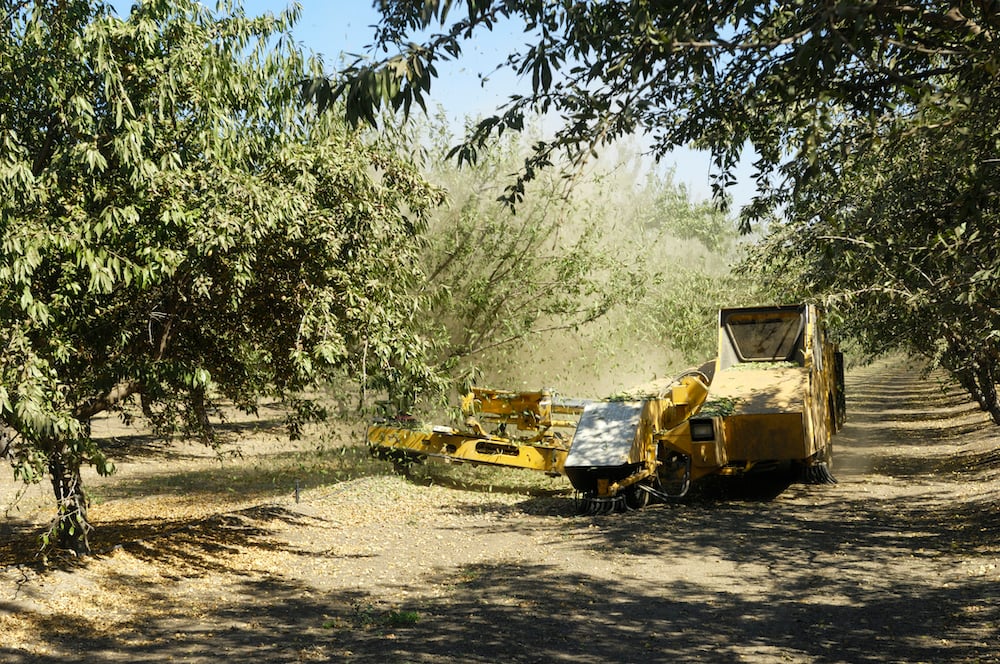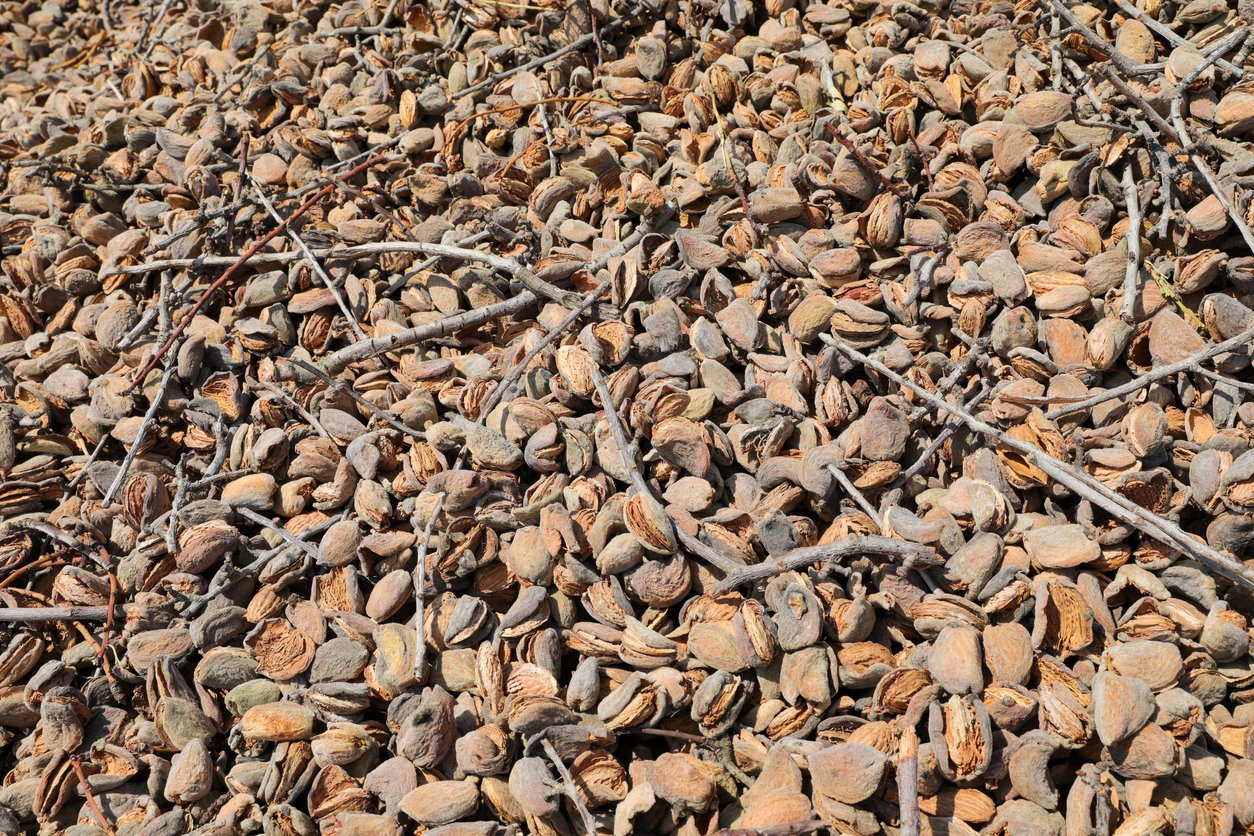During harvest, timing is everything: from careful planning to minimize dust pollution to racing the clock to stay ahead of pests. But the sense of urgency doesn’t end with nuts safely in the stockpiles: as soon as harvest is complete, it’s time to get water onto trees and set yourself up for success in the year to come.
How soon should growers irrigate after harvest?
“[A grower’s] actions post-harvest can have a dramatic impact on next year’s crop,” says Greg Norris, state conservation engineer with USDA NCRS. “Post-harvest, the trees are still growing and begin to store energy for the next year.”
For this reason, allowing trees to lose their leaves too early can hurt future yields. Prompt post-harvest irrigation helps maintain the function and activity of the leaves until they begin to fall naturally.
Post-harvest strategies to prevent premature defoliation differ between crops and from region to region. But especially given the trend toward deficit irrigation, many almond growers need to hustle to return to their irrigation schedules: by this point, trees may have gone weeks without water and experienced significant stress.
“Getting water on is the most crucial,” says Ceres Imaging agronomist Dirk Venn. “Crops are usually stressed and starving for water. Get those last few irrigations out before they lose all their leaves.”

Growers who own their equipment and harvest their own fields can better control the timing of irrigation—but for those who outsource these services, there’s always the possibility of delay. Contracts may run late or jobs might last longer than anticipated, all of which adds more time to trees going without water.
“I would say, do whatever you can to irrigate immediately after harvest,” Venn says. “I’m a grower myself, and once we’re done with harvest, we start the pumps and make sure we get water to every tree.”
Harvest follow-up should include checking for irrigation issues
Apart from preventing premature defoliation, post-harvest irrigation is an opportunity to uncover hidden damage caused during harvest—for example, pipes broken by heavy equipment, lines chewed by rodents and other wildlife pests while nuts were on the ground, or buildup in lines during the lengthy period that trees have gone without water.
For Ceres Imaging customers, pairing post-harvest irrigation with a post-harvest flight is an efficient option for revealing issues that manual inspection may miss. Aerial data can help growers pinpoint and prioritize a range of maintenance problems including pressure loss, valve issues, or broken risers in the field.
An aerial perspective is also helpful in getting the big picture and identifying areas of an orchard that are experiencing disproportionate levels of stress. If a portion of the irrigation system experienced pressure loss during the season, for example, the trees will lose their leaves sooner.

“By really keying in on those areas, we can help growers find a solution,” says Venn. “The idea is to get ready for dormancy: have those last few irrigations be uniform, high pressures everywhere, and get water out before the trees start to set down.”
Identifying stressed areas of the orchard is especially important for growers planning on post-harvest fertilization. Timely post-harvest irrigation applications are a part of ensuring a strong bloom or bud break in the following year—setting the stage for another successful harvest.
